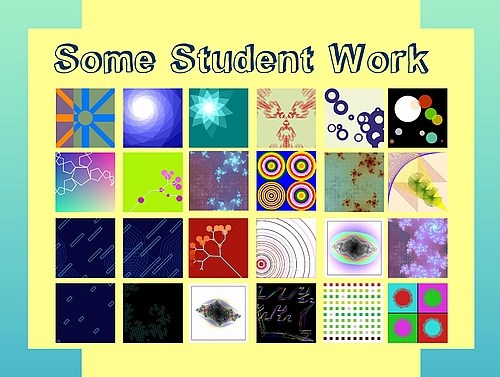Interdisciplinary Projects in Science and Beyond
Saturday, September 29, 2012
3:30-5:00 PM, WCC 233
The Picture of Health: Collaboration and Learning Across Disciplines in the Waiting Room Project
Marguerite Perret, Associate Professor of Art, Washburn University
The Waiting Room: lost and found is a visual art installation that crosses disciplines, and spills out of the gallery into local communities nearby, and over city and state lines onto other campuses. The exhibition and corollary book blur the line between an educational project and immersive art experience. Complex and multi-layered, the exhibition has become a visual and multimedia learning site that explores and critiques perceptions of illness and the systems that diagnose and treat it through the metaphoric ‘liminal’ space of the medical waiting room.
Through the layout of the exhibition, viewers are made participants in the waiting room community. They are also encouraged to share stories and artwork through onsite interactivity stations and through structured events and workshops.
Marguerite Perret, associate professor of art and design at Washburn University in Topeka, is a multi-media installation artist who explores issue-based, interdisciplinary connections between art, science and medicine through institutional and professional collaborations. She has exhibited widely with a number of invitational and solo projects, and has been commissioned to create large-scale, site-specific temporary public artworks. In addition to a variety of artist residencies and project grants, Perret has received support to travel internationally to document natural history and medical museum collections as part of an ongoing study of how we represent and consume nature and our own bodies. Degrees: William Paterson University, B.A.; Montclair State University, M.A.; Southern IL Univ-Carbondale, M.F.A.
Between Maps and the Marvelous: Policy, the Public, and the Hubble Images’ Multiple Geographies
Hannah Goodwin '10, MA/PhD Student, Department of Film and Media, University of California, Santa Barbara
I began this presentation by tracing the international politics of extraterrestrial territorialization in the 1950s and 60s, showing how such legal discussions about outer space as potential property resurfaced as the Hubble went into orbit and scientists staked claims to images of certain celestial bodies and areas. I argue that these claims, and the contested visual geographies they engender, are at odds with the ways the public experiences the Hubble’s images—as objects of awe, spiritual and cognitive exploration, and scientific discovery, and as evidence of incomprehensible spatial and temporal immensity.
As scientists carved up the cosmos this disparity between popular, heterotopic geographies of space and NASA's treatment of space as territory became problematic. I discussed these multiple roles of Hubble's images and also interrogated the ways in which contexts of exhibition shape public perceptions of the Hubble’s images, citing public comments on NASA's Google Plus image stream, children's reactions to images in Los Angeles's Griffith Observatory, Terrence Malick's use of Hubble images in his film The Tree of Life (2011), and more.
Hannah Goodwin graduated from Carleton College in 2010 with a BA in German. She then received a Fulbright grant to study at the University of Vienna's Institute for Eastern European History for the 2010-2011 academic year. Her current research interests are wide ranging, thanks to her liberal arts background, and include the intersection of science and popular media, as well as race and nationalism in Austrian cinema and entertainment media. Degree: Carleton College, B.A.
Algorithmic Arts-Bridging Computer Science and Studio Art
Samuel A. Rebelsky, Professor of Computer Science, Grinnell College
We have transformed the introductory course in computer science to emphasize the construction and manipulation of images. Students work with a drawing application, creating images by hand and with “scripts”.
We are exploring ways to have students in this course collaborate with students in the introductory studio art course. One approach builds on a Modular Print project in the studio art course in which students build a square block that they then print in multiple rotations to achieve a more complex image. For the bridge activity, studio students can propose basic arrangements of the blocks, and CS students can build a program that helps the art students explore the design spaces those arrangements suggest.
The capstone project for the course is A Procedure is Worth 1000 Pictures, in which students write a program that, given a width and height, can generate 1000 different but related images that meet particular guidelines. The project must meet both studio and computer science design criteria. We do studio critiques of both the aesthetic and computational aspects of the projects.
Related blog post:
Highlights from Carleton College's Visual Learning Conference (Part 2)
Agile Learning, Derek Bruff, Director of the Center for Learning, Vanderbilt University

